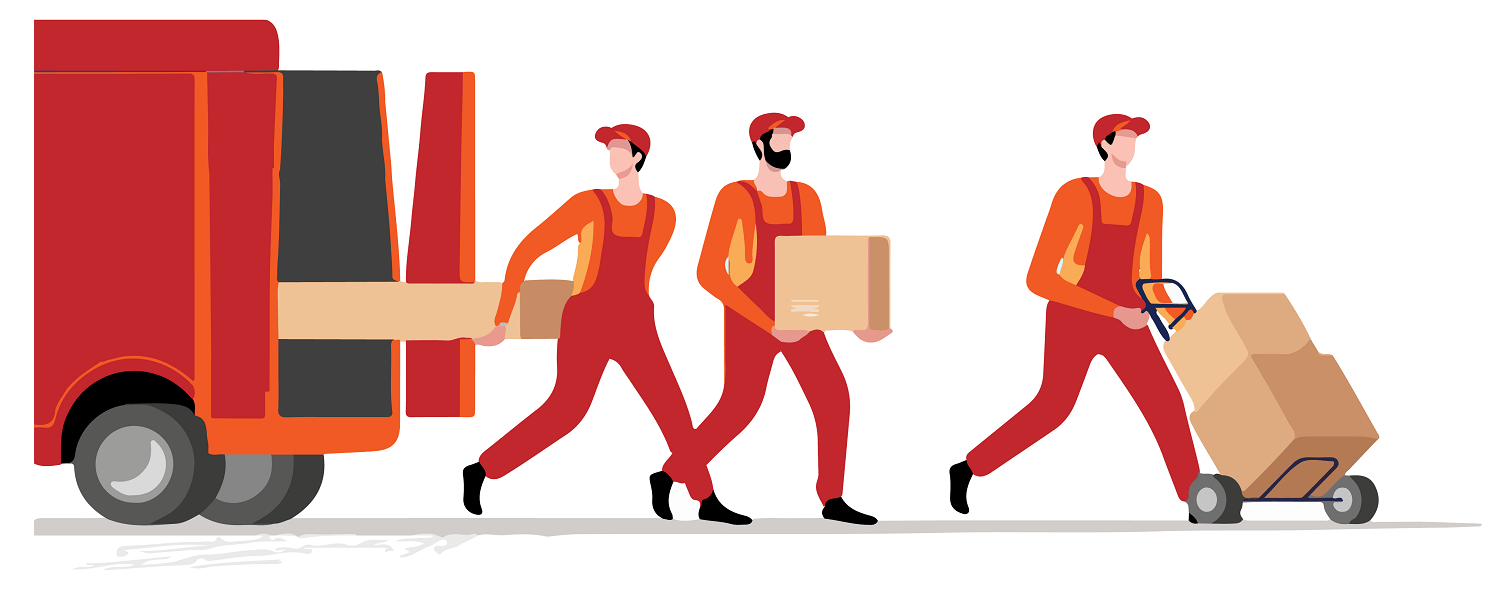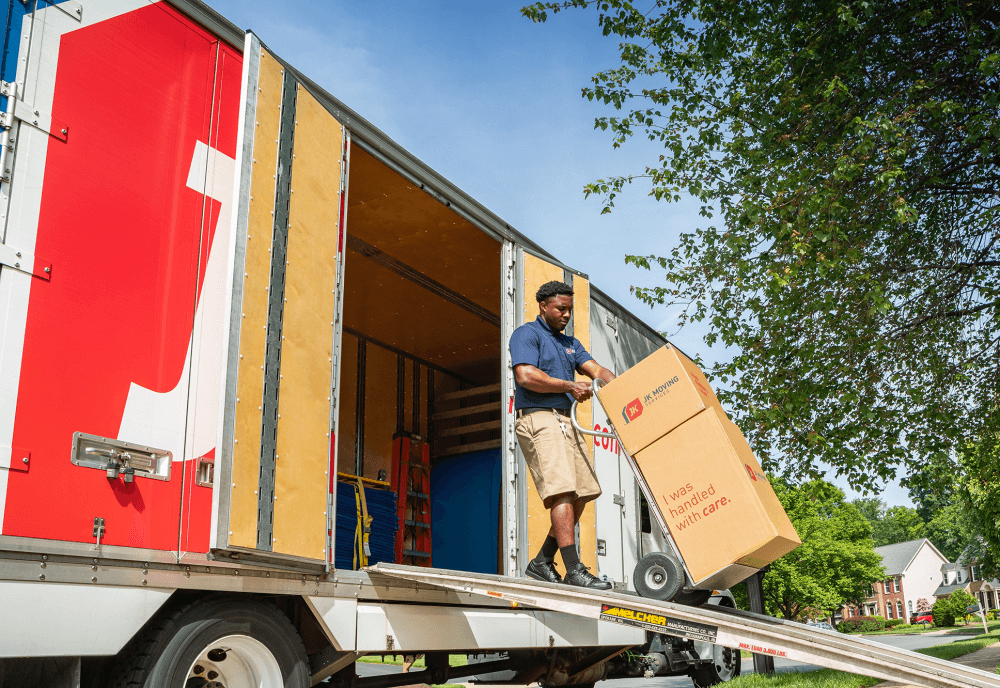Moving Checklist Services: Expert Moving Specialists Can Assist Make Your Transition Smooth And Hassle-free
History and Evolution of Moving Services
The Dawn of Moving: From Muscle to Devices
Photo this: a handful of strong guys transporting heavy trunks on wood carts, navigating cobblestone streets with sweat and decision. Before the modern-day moving industry took shape, moving was a harsh, labor-intensive task. In ancient times, relocation often meant depending on large physical strength and basic tools. The lack of specialized services suggested families and merchants had to coordinate every information themselves, often risking damage or loss.
But isn't it remarkable how need fuels innovation? As cities broadened and commerce grew, the need for efficient, trusted moving services ended up being glaringly apparent. Get in the period of horse-drawn wagons and later on, motorized vehicles, which reinvented how possessions took a trip from one location to another.
Industrial Transformation: The Driver for Modification
The 19th century's commercial boom reshaped numerous facets of life, consisting of how individuals moved. Unexpectedly, urban migration rose, and with it, the demand for professional movers increased. No longer was moving an easy chore; it evolved into a customized service offering:
- Packaging know-how to secure vulnerable items
- Organized packing methods maximizing space
- Transportation options customized to various ranges
This period marked the birth of business devoted exclusively to moving, preparing for today's complex logistics and customer-centric techniques.
Technological Advancements and Their Effect
Can you imagine moving without contemporary equipment? The advent of hydraulic lifts, forklifts, and pallet jacks changed the industry over night. Suddenly, movers might deal click here with bulky furniture and heavy devices with ease, minimizing injuries and improving performance.
Additionally, the combination of digital innovation stimulated a new wave of development. GPS tracking, online booking platforms, and real-time inventory management have ended up being staples in the moving services landscape. These tools not only boost transparency but likewise empower customers to stay connected and informed throughout their moving journey.
Key Turning Points in Moving Provider Evolution
| Era | Advancement | Significance |
|---|---|---|
| Ancient Times | Manual work and standard carts | Structure of moving as a need |
| 19th Century | Horse-drawn wagons and packing services | Birth of professional moving business |
| 20th Century | Motorized trucks and mechanized devices | Increased efficiency and scale |
| 21st Century | Digital integration and GPS technology | Enhanced client experience and logistics |
Reflections on the Journey
Assessing the development of movers, one might wonder: how did an easy act of transporting possessions become a sophisticated market? It's a tale of strength, adjustment, and constant enhancement. From the sweat-soaked streets of old to the precision-driven operations these days, the history of moving services is as vibrant as the people who rely on them.
Next time you pack a box or hire a mover, consider the layers of history embedded in every step. The journey of movers encapsulates human ingenuity, changing what was when an overwhelming job into a seamless experience.
Exploring the Spectrum of Moving Services
When the time concerns move your life from one address to another, the range of moving services available can seem like navigating a maze. Do you require a basic loading and discharging team, or does your relocation demand the skill of full packaging and unpacking? Understanding the subtleties can save hours of disappointment and unforeseen costs.
Common Types of Moving Providers
- Local Moves: Designed for movings within a city or urban area, these services normally run on a per hour basis, ideal for short ranges.
- Long-Distance Moves: Covering moves beyond 100 miles, these need more coordination, from logistical planning to secure transportation, often priced by weight and range.
- Full-Service Moves: Movers deal with whatever-- packaging, loading, transferring, unloading, and sometimes even unloading. Perfect for those pressed for time or energy.
- Self-Service Moves: You load and fill your personal belongings, while the company handles transport and unloading. A happy medium offering cost savings and some convenience.
- Specialty Relocations: For vulnerable, bulky, or valuable products like pianos, antiques, or artwork, requiring specific equipment and expertise.
Expert Tips to Browse Your Moving Service Choices
- Prioritize Versatility: Pick a service that adjusts to unexpected hold-ups or last-minute modifications-- stiff schedules can turn a smooth relocation into a logistical headache.
- Examine Insurance Options: Not all moving business provide the exact same level of protection. Comprehending your protection can prevent heartache if something goes awry.
- Request In-depth Stocks: An accurate item list avoids disagreements and makes sure responsibility, especially when dealing with long-distance or specialty moves.
- Think About Season: Seasonal need can impact availability and prices. Early booking throughout off-peak seasons may approve much better service and versatility.
- Ask About Packing Products: Top quality boxes, bubble wrap, and padding can be the distinction between a scratched heirloom and a pristine arrival.
Table: Service Features Compared
| Service Type | Who Loads? | Transport Mode | Typical Prices Model | Suitable For |
|---|---|---|---|---|
| Local Move | Consumer or Movers | Truck | Hourly | Short ranges, small loads |
| Long-Distance Move | Movers | Truck or Container | Weight & & Range | Cross-state or local relocation |
| Full-Service Move | Movers | Truck | Flat or Weight-Based | Time-sensitive, high-stress relocations |
| Self-Service Move | Client | Truck or Container | Flat or Hourly | Cost-conscious, hands-on movers |
| Specialized Move | Movers with knowledge | Specialized Devices | Custom Quote | Vulnerable or valuable products |
The Unseen Complexity Behind Each Choice
Have you ever wondered why moving seems simple and easy on tv but becomes a waterfall of last-minute choices in reality? The fact depends on the intricacies of each service type. For instance, full-service relocations may appear like a luxury, however the proficiency associated with packing delicate heirlooms or taking apart bulky furniture is a craft developed over years. Deciding for a self-service relocation might save cash, but it demands an eager understanding of how to pack effectively-- did you know that stacking strangely shaped boxes improperly can trigger internal shifting during transit, wrecking delicate contents?
Picking the best kind of moving service is not almost convenience-- it has to do with securing your memories and financial investments. What's your relocation's story going to be?

Packaging and Moving Techniques
Ever attempted to fit a travel suitcase that simply will not close? That's the sort of puzzle expert movers solve daily-- but on a much larger scale. The secret lies not in strength however in strategic placement and intelligent use of area. Packing isn't simply about packing items into boxes; it's an art form where every inch counts.
Layering for Success
Imagine a painter layering colors to develop depth. Similarly, when packaging, start with much heavier products at the bottom, then cushion with softer products like bubble wrap or towels. This avoids damage and maximizes box stability. Strangely formed items can slip into spaces, decreasing wasted space.
- Wrap fragile items separately with tissue or foam to avoid scratches.
- Use clothing as padding-- it's both effective and eco-friendly.
- Fill voids with packing peanuts or crumpled paper to decrease movement.
Labeling: The Unsung Hero

What excellent is perfect packing if you invest hours searching through boxes? Detailed labeling is a game-changer. Instead of unclear tags like "Cooking area," try this technique:
| Label | Description | Concern |
|---|---|---|
| Delicate - Glasses | Handle with care, consists of delicate items | High |
| Essentials - Opening Night | Products required instantly after moving | Urgent |
| Books - Research Study Room | Stacked, heavy books | Medium |
Strategic Packaging Tips
- Disassemble big furnishings and keep screws in identified bags taped to the pieces.
- Usage uniform box sizes when possible-- stacking becomes much easier and safer.
- Don't overpack boxes; weight limits exist for a factor. Aim for 40-50 pounds max.
- Wrap furnishings edges with moving blankets to prevent scratches throughout transit.
- Seal boxes with premium packing tape-- double layers on the bottom are necessary.
Why do some movers swear by a color-coded system? Since it eliminates uncertainty on moving day. Appoint each space a color and mark boxes appropriately. This little action can conserve hours when unloading and unloading.
Packing and moving demand precision-- like a chess video game where every relocation counts. Have you ever discovered how some movers handle large products effortlessly? They leverage angles and pivot points to navigate tight corners without damage. It's not muscle; it's technique.
Hidden Battles Behind the Moving Van Doors
Ever enjoyed a team of expert movers bring a grand piano through a narrow doorway and questioned how they pull it off without a scratch? The art of moving isn't simply muscle and trucks; it's a delicate dance with unpredictability. Weather condition can flip from a sunlit blessing to a torrential threat in minutes, turning a straightforward drive into a logistical maze.
One infamous difficulty is the labyrinthine design of some homes or apartments. Staircases too tight for dollies, doorways narrower than standard boxes, or elevators that barely fit a sofa-- these physical peculiarities demand innovative solutions on the area. Movers frequently resort to non-traditional techniques like disassembling furnishings or utilizing personalized padding to secure both the item and the residential or commercial property.
Precision Packaging: More Than Simply Covering
It's tempting to think packing is merely packing boxes, however the truth is a complex puzzle of weight distribution and fragility. Movers need to prepare for how products will move throughout transit-- a mistake can mean shattered treasures or dinged up home appliances. The secret weapon? Strategic layering and utilizing materials with specific shock-absorbing qualities.
- Bubble wrap is standard, however rotating it with foam sheets can significantly decrease effect damage.
- Heavy items address the bottom; delicate ones nestle on top, cushioned by soft fabrics.
- Labeling boxes not just by contents however by handling guidelines makes sure quicker, more secure dumping.
Another less talked about pressure is the mental toll. The clock ticks non-stop, and every delay ripples through tight schedules. Staying calm amidst disorderly last-minute changes needs mental agility and group synergy.
Traffic Jams and Timing: The Invisible Challengers
| Obstacle | Specialist Technique | Impact |
|---|---|---|
| Urban congestion | Path optimization apps and flexible scheduling | Reduces hold-ups and fuel intake |
| Parking constraints | Pre-arranged licenses or strategic parking nearby | Prevents fines and time loss |
| Unpredictable weather | Waterproof coverings and contingency strategies | Preserves the condition of items and devices |
Do you really know what it takes to keep a moving day on track? It's not practically strength or stamina; it has to do with insight, flexibility, and a deep understanding of every piece of the puzzle. The next time you see movers at work, remember: behind that smooth operation lies a series of computed maneuvers and fast thinking that couple of ever notification.